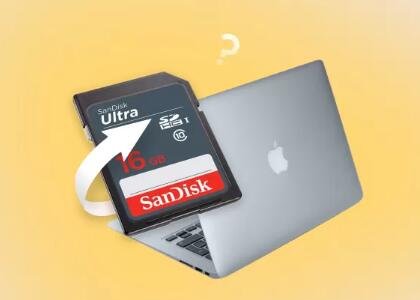Restoring lost files from an SD card can be a critical process, especially when important documents, images, or videos are involved. Whether the files were deleted accidentally, the card became corrupted, or you accidentally formatted it, there are several methods you can use to recover lost files.
Accidental Deletion: One of the most common causes of data loss. You might have accidentally deleted a file or emptied the trash on your computer or camera.
Card Formatting: Sometimes, the SD card may be formatted either unintentionally or due to an error message asking you to format the card.
Corruption: Corruption can occur due to improper removal of the card from a device, bad sectors on the card, or physical damage to the card.

File System Errors: The SD card might develop file system errors, causing the data to be inaccessible.
Virus or Malware: A virus or malware infection can corrupt the files on the SD card and prevent access to them.
Understanding the cause of your data loss helps determine whether recovery is possible and the most effective recovery method.
Preparing for File Recovery
Before you start recovering files from your SD card, follow these preparatory steps:
Stop Using the SD Card: As soon as you notice data loss, stop using the SD card immediately. This prevents new data from overwriting the lost files. Even a small amount of new data could make it difficult to recover your lost files.
Use a Card Reader: If you’re trying to recover data from an SD card in a camera or phone, it’s better to use a card reader connected to your computer. This ensures that the SD card isn’t being accessed by other devices while you’re trying to recover the files.
Check for Physical Damage: Examine the SD card for visible signs of damage, such as cracks, scratches, or bent connectors. If there is physical damage, recovery might require professional services.
Use Trusted Software: Several file recovery programs are available, but it’s crucial to choose one with a good reputation and reliability. Some free programs may offer limited features, so if you’re serious about recovering lost files, you might want to invest in paid software for better results.
Software-Based Methods for Recovering Lost Files
Panda Assistant offers an intuitive interface that simplifies the recovery process, even for those without technical expertise. The software supports a wide range of file types, including photos, videos, documents, and more, ensuring that users can retrieve virtually any lost or damaged data. Panda Assistant uses advanced scanning algorithms to detect and recover files that might otherwise be inaccessible due to accidental deletion, formatting, or file system corruption.
One of its key features is its deep scan mode, which can locate files that have been permanently deleted or lost due to errors, offering a higher chance of successful recovery. Additionally, Panda Assistant provides preview capabilities, allowing users to view recoverable files before restoring them, ensuring that only the desired files are recovered.
With support for multiple storage devices and compatibility with both Windows and Mac operating systems, Panda Assistant is a versatile tool for data recovery. Whether you’re a home user or a business professional, Panda Assistant offers an efficient, reliable, and straightforward solution for recovering lost files.
1. Professional Data Recovery Services
If the data loss is due to physical damage (e.g., broken SD card, water damage), the only option might be to contact a professional data recovery service. These experts can repair and recover data from physically damaged storage devices.
2. Check for File System Errors
Sometimes, SD cards become corrupted due to file system errors. To check and repair file system errors on a Windows computer:
Open File Explorer and right-click on your SD card.
Select Properties and go to the Tools tab.
Click Check under “Error checking” to scan for errors and repair the SD card.
On a Mac, use the Disk Utility tool to verify and repair the disk.
Preventing Future Data Loss
After successfully recovering your files, it’s essential to take steps to prevent future data loss:
Back Up Your Files: Always keep backups of important files on another device or cloud storage. This ensures you have copies in case of data loss.
Eject SD Cards Properly: Always safely eject SD cards from your devices to avoid file corruption.
Use Reliable SD Cards: Invest in high-quality, reputable SD cards from well-known brands.
Regularly Format the Card: If you use your SD card in multiple devices, regularly format it to maintain its performance.
About us and this blog
Panda Assistant is built on the latest data recovery algorithms, ensuring that no file is too damaged, too lost, or too corrupted to be recovered.
Request a free quote
We believe that data recovery shouldn’t be a daunting task. That’s why we’ve designed Panda Assistant to be as easy to use as it is powerful. With a few clicks, you can initiate a scan, preview recoverable files, and restore your data all within a matter of minutes.










